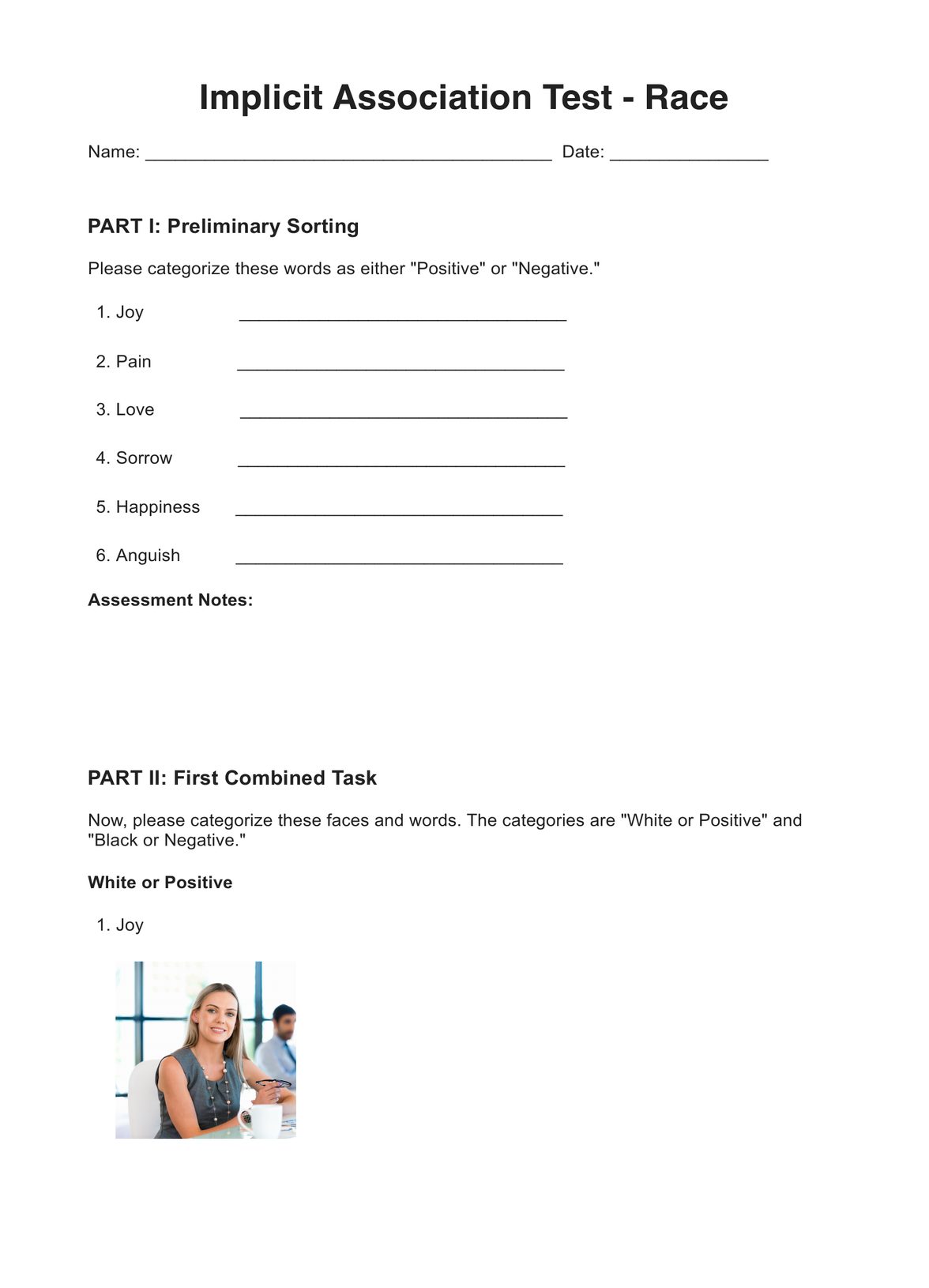Human resources specialists, psychologists, researchers, and educators use the IAT.

Implicit Association Tests
Explore your unconscious biases with Implicit Association Tests (IAT) using Carepatron's secure and user-friendly platform, available anytime, anywhere.
Use Template
Implicit Association Tests Template
Commonly asked questions
The IAT is typically used when there's a need to uncover and understand unconscious biases for personal awareness or research purposes.
The IAT measures the speed at which individuals associate certain attributes with particular social categories, revealing their implicit biases.
EHR and practice management software
Get started for free
*No credit card required
Free
$0/usd
Unlimited clients
Telehealth
1GB of storage
Client portal text
Automated billing and online payments











